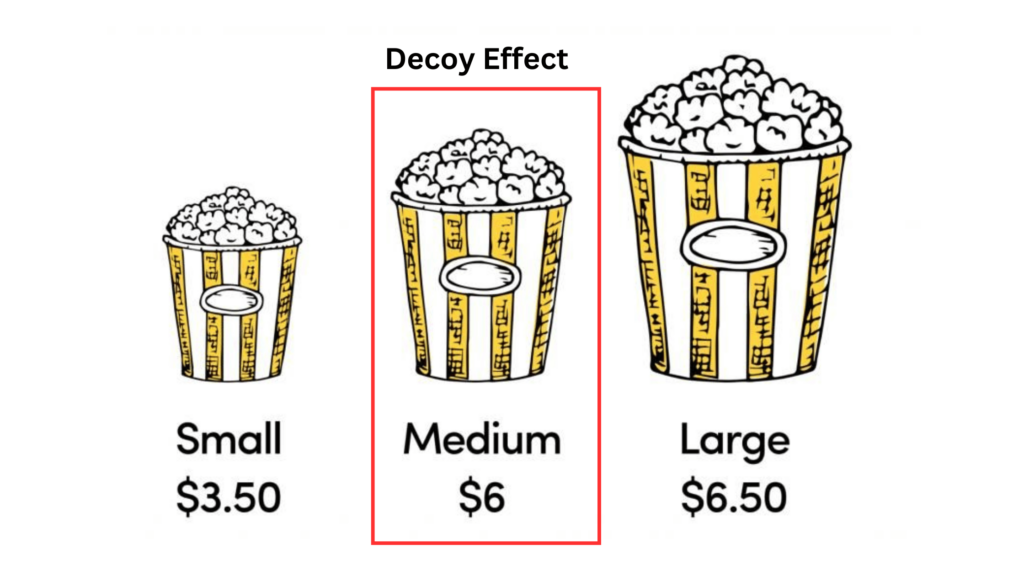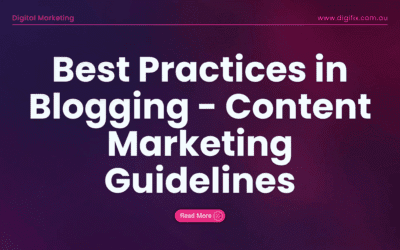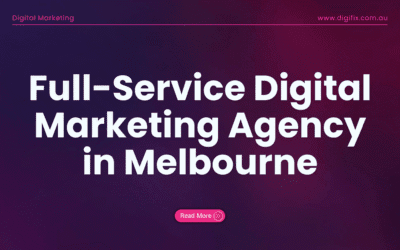Psychology plays a prominent role in everything we do, including how we decide what to buy. Even if we’re not aware of it, psychology influences our choices as consumers.
That’s why marketers can use psychological tricks to guide us toward making the decisions they want us to make. By understanding human behavior and how human minds work, marketers can influence customers to choose their products or services.
To help you get the best outcome of your marketing campaigns, we have created a list of Marketing Psychology principles in this blog post.
What is The Psychology of Marketing?
Marketing psychology, sometimes known as “Neuromarketing,” applies principles from neuropsychology to marketing, sales, and content creation to influence consumer behavior and purchasing decisions. By understanding how and why people think and act the way they do, marketers can enhance their strategies to reach a broader audience.
Our brain operates uniquely and creates shortcuts to help decision-making. By understanding these shortcuts, marketers can effectively reach and engage with consumers. The Marketing psychology principles presented in this blog will help to improve your marketing strategy.
Marketing Psychology Principles
Let’s dive into the list of psychological principles in Marketing.
1.Action Paralysis Theory
The Action Paralysis theory explains that people tend to overthink their purchasing decisions and doubt themselves. Especially they are not sure about how their decisions will influence them or people close to them.
But if you give them a reason to act, like explaining why it’s a good idea, it can stop them from overthinking and doubting themselves.
To help them make a decision, you can give them a good reason to go ahead and buy it. For example, instead of saying “Buy now” in your advertisements, you can say “Buy now and become healthier.”
Call to action like those mention a clear benefit of your product or service. It helps customers to buy your products without a doubt.
2.The Anchoring Effect
The anchoring effect is when people rely too much on the first piece of information they hear when making decisions, whether it’s accurate or not.
That can happen in various situations, like when you choose what to buy or how much something should cost.
This effect can either help your brand or hurt your brand. When it helps you, it makes it easier to sell your products or services. But when it works against you, it can make things harder.
For example, in pricing, you might show a high-priced option first to make other options seem cheaper. That can change how potential customers see the value of what you’re selling and affect whether they decide to buy it or not.
3.The Decoy Effect
The decoy effect, also known as the asymmetrical dominance effect, is a trick our brains play when making choices. It happens when we change our preference between two options after a third, slightly better, or worse option comes.
Here’s how it works: Imagine trying to decide between two options, like two different popcorn options. Then a third option is introduced, a more expensive one with extra features. Before that third option came, you preferred the cheaper one from the previous two options. But the new Popcorn option makes the second cheaper one seem like a better deal.

This effect is strong in digital marketing, especially when setting prices. By strategically presenting options, marketers can influence which one you’re more likely to choose.
4.Framing Effect
The framing effect is one of the most popular marketing psychology principles among marketers. The framing effect refers to adjusting the context to make consumers more open to your product or service. It is a cognitive bias that shows how you present information and can influence your decisions.
So, how you present your product is just as crucial as the product itself in influencing people’s decisions.
For example, let’s say you’re selling a dairy product. Instead of saying it has 5% fat, you could frame it as “95% fat-free.” Even though both statements mean the same thing, the positive framing of “95% fat-free” is likely to be more appealing to consumers.

This principle reminds us that focusing on the positive aspects can lead to a better response from customers.
5. Halo Effect

Psychologist Edward Thorndike first talked about the Halo Effect in 1920. It’s basically a shortcut our brains use to judge things based on first impressions. So, if someone has a good experience with one product from a brand, they’re likely to think other products from that brand are also good.
The Halo Effect is a cognitive bias where people’s general impression of something, like a person, brand, or product, affects how they feel or think about specific traits or qualities. In marketing, creating a positive overall impression can really impact how consumers see a product.
For example, let’s say there are two products, one with great packaging and one with better quality but not as attractive packaging. People might think the one with the nice packaging is better, just because they like how it looks.
This happens because our impression of the packaging affects how we see the whole product, including its quality.
The Halo Effect makes people more loyal to brands because a good impression in one area can make them think everything the brand does is good.
For example, Apple’s strong brand image in computers makes people trust and buy their other products like the iPhones and Apple Watch. So, even if the products are different, people still trust the brand because of its good reputation.
6.Loss Aversion
Loss aversion is a psychology theory where people are more afraid of losing something than excited about gaining something of equal value. In marketing, emphasizing potential losses rather than gains can be a powerful motivator to drive action.
For example, let’s consider a gym membership promotion. Instead of highlighting the benefits of joining the gym, such as improved health and fitness, the marketing campaign could focus on the potential losses of not joining, such as missing out on achieving fitness goals, feeling unhealthy, or regretting not taking action.
This taps into people’s fear of missing out or experiencing regret, making them more likely to sign up for the membership to avoid those losses.
In this way, loss aversion can be used strategically in marketing to influence consumer behavior by emphasizing the negative consequences of not taking action.
Let’s see how to use it in your marketing campaigns,
Sense of Urgency: Create a sense of urgency by offering limited-time offers or promotions. For example, you can use phrases like “Act now, offer ends soon!” or “Limited quantities available, don’t miss out!”
Fear of Missing Out (FOMO): Highlight potential losses and emphasize the consequences of not taking action. Use phrases like “Last chance to save!” or “Don’t miss out on this once-in-a-lifetime opportunity!”
7.Social Proof
Social proof is when people look at what others are doing and assume that’s the right thing. In marketing, testimonials, user reviews, and social media influencers are powerful tools to show social proof. When consumers see others liking a product or service, they’re more likely to trust it.
To use social proof in your marketing, start collecting reviews, case studies, and testimonials from happy customers. Share them on your website, in a special section where your target audience can see what others think about your business. You can also share them on social media and review platforms to build trust with potential customers.
8.Scarcity
The Scarcity Effect is the idea that people desire things more when they believe those are rare or hard to get. Marketing tactics like limited editions, exclusive releases, and countdowns all use the scarcity effect to encourage consumers to act quickly before a product or opportunity runs out.
Scarcity marketing is based on the concept that people prefer what is hard to obtain.
This type of exclusivity scarcity implies that the item may not be in short, but rather that only a privileged few can obtain it. Scarcity is a powerful strategy for brands to generate excitement and buzz on social media.
For example, a shoe brand releases a limited edition sneaker collection with only 500 pairs. This scarcity makes the sneakers more desirable, and people rush to buy them before they sell out. The exclusivity of the limited release creates hype and drives up demand for the shoes.
9.Goal Gradient Effect
The Goal Gradient Effect shows that people put in more effort as they get closer to reaching a goal. This is one of the most popular marketing psychology principles.
This consumer psychology is great for creating loyal customers because once you have them, it’s hard to lose them. Loyalty programs, with their rewards and points systems, use this idea to keep customers engaged and working toward the next level of benefits.
Here are some ways to use this effect:
Step by step: Ask for small things, like filling out a contact form, before moving on to bigger requests, like referrals.
Freebies or Free trial: Offering a high-quality, valuable product or service for free makes it hard for customers to say no after they’ve tried it.
Wish Lists: Customers feel attached to items they add to their wishlists, making it difficult for them to remove them and not make a purchase.
10.Reciprocity
Reciprocity is a common idea where a company does something positive for the consumer, and in exchange, the consumer responds with something beneficial for the company. That could mean purchasing more products, recommending the product to friends, or sharing about it on social media.
To make reciprocity work for you, you can offer customers discount codes, free samples, or small gifts to build trust and show your value. Providing valuable content, such as videos, blog posts, or eBooks, is another way to engage customers.
When you give customers something useful, they’re more likely to reciprocate by taking actions like making a purchase or signing up for your mailing list.
11.Pygmalion Effect
The Pygmalion effect, also known as the Rosenthal effect, is a psychological principle that applies to customers and employees. It suggests that if you believe something about yourself, it can become true, and if others believe something about you, it can also become true.
To use this principle effectively, it’s important to identify the core values of your brand and ensure that your employees understand and embody these values.
Communicating these values to your customers can also influence their purchasing decisions. By aligning your sales strategy with your core values, you set clear expectations and build meaningful connections with your audience.
The Pygmalion effect involves creating positive expectations for your customers and promoting your brand in a meaningful manner. Your marketing efforts should demonstrate how your products or services can enhance the lives of your customers.
12.Information Gap Theory
The information-gap theory in psychology marketing revolves around the idea that consumers are motivated to seek out information when they encounter a gap in their knowledge about something they’re interested in.
You’ve likely come across this tactic without realizing it. For instance, think of teasers or articles with headlines like “How To…” or “The Secret To…”. These headlines grab your attention and entice you to click by offering relevant information that fills a gap in your knowledge.
However, it’s essential to use this tactic responsibly. Avoid drawing people in with false information. If you present a teaser headline, make sure you deliver on the promised information to maintain trust and credibility with your audience.
How to become ethical in using these Marketing Psychology Principles?
When employing marketing psychology tactics, it’s essential to act responsibly and avoid manipulating your customers’ emotions. Here are some ways to do so:
- Honesty and Integrity: Avoid making promises you can’t keep or using misleading information to attract customers. Deliver on your promises and maintain transparency in your marketing communications.
- Empathy: Remember that there are real people on the receiving end of your marketing strategies. Consider their feelings and experiences, and strive to connect with them in a genuine and empathetic manner.
- Building Trust: Focus on building trust with your customers by consistently delivering value and demonstrating integrity in your business practices. Trust is essential for fostering long-term relationships with your audience.
- Customer-Centric Approach: Prioritize the needs and preferences of your customers over short-term gains. Tailor your marketing efforts to provide genuine solutions to their problems and enhance their overall experience.
- Ethical Considerations: Consider the ethical implications of your marketing tactics and ensure that they align with your values as a business. Avoid exploiting vulnerabilities or manipulating emotions for the sole purpose of driving sales.
Ultimately, responsible marketing involves prioritizing the well-being and satisfaction of your customers while also achieving your business objectives. By approaching marketing psychology with integrity and empathy, you can build meaningful and positive relationships with your audience while driving sustainable growth for your brand.
Elevate your Business with Digital Marketing!
Do you want more traffic?
Hi, we are an Australian digital agency doing groundbreaking work to help a business like yours reach its full potential. My only question is will you qualify for our services?
Do you want more traffic?
Hi, we are an Australian digital agency doing groundbreaking work to help a business like yours reach its full potential. My only question is will you qualify for our services?





0 Comments